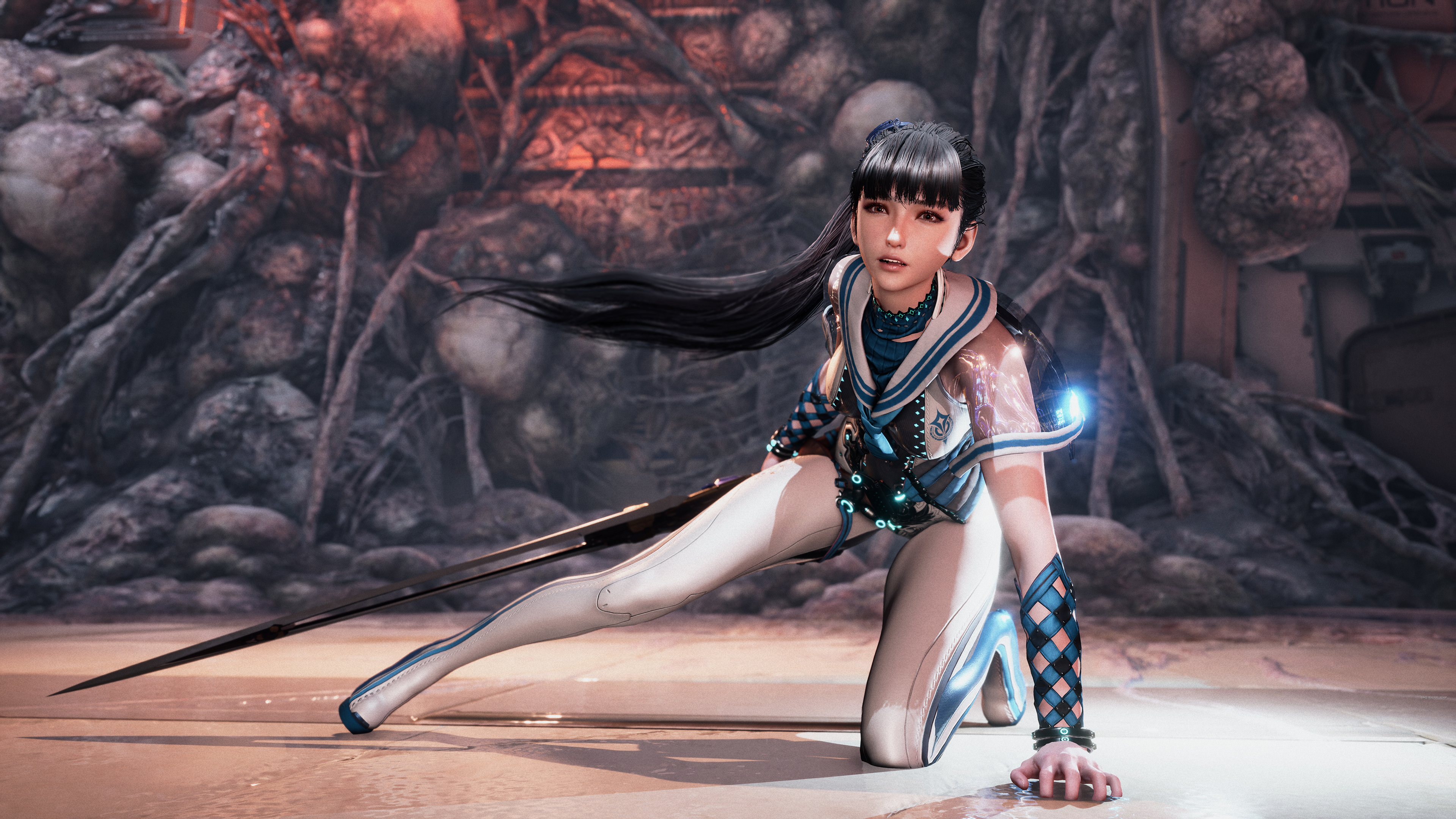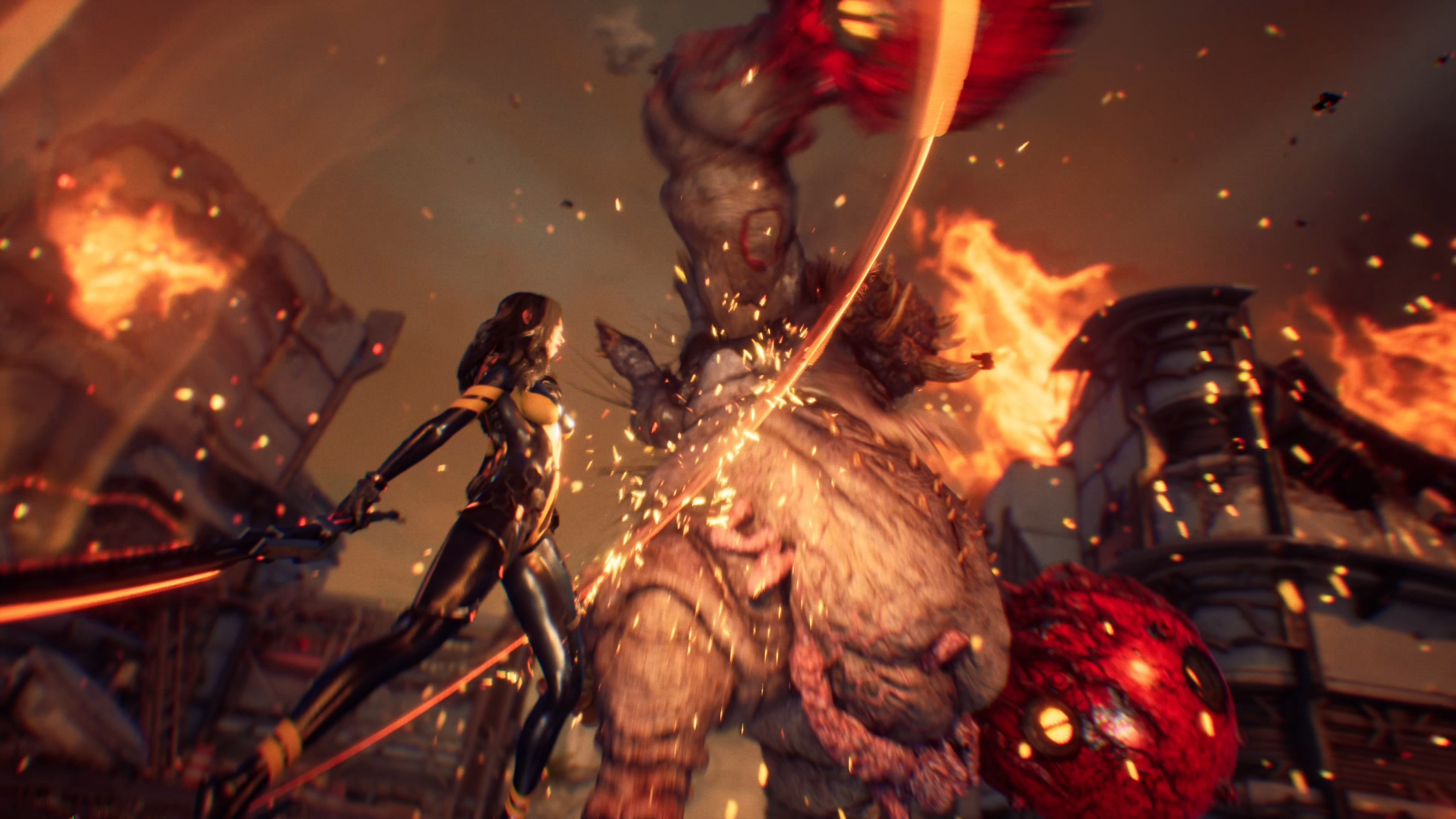
About 10 minutes into my first encounter with Stellar Blade, I had a sudden very strong sense of deja vu. I hadn't played the game before, I hadn't seen much footage at all, but while guiding Eve through those desolate post-apocalyptic streets, I had a distinct feeling I'd been here before, and not because I used to live in Hemel Hempstead. A few minutes later, while battling one of the first major enemies I'd encountered, it dawned on me: Stellar Blade is a PS2 game. Not literally, of course, but in terms of its look, feel and general vibe. Many years ago, I was a regular writer for Official PlayStation 2 Magazine and I reviewed a lot of games on that wonderful machine – and something about Stellar Blade felt like returning to it. Then I went on Twitter and found that a lot of people were saying the same thing.
But why? Designer Kim Hyung Tae has talked about modern titles such as Sekiro and Nier as key reference points. So what is it about this game that's taking us all back twenty years?
Hack and slash

There's an obvious overarching answer: Stellar Blade is essentially a hack and slash character action game and that sub-genre reached its absolute peak in the PlayStation 2 era. At the time, the machine's powerful Emotion Engine CPU gave developers the ability to construct detailed explorable worlds and densely textured character models – however, the conventions of the modern open-world action role-playing game hadn't yet been established. Instead, many studios were combining modern advances in 3D visuals with the gameplay traditions they already knew - namely the frenetic close-quarters combat of the 1980s and 1990s scrolling brawlers. Hence, the 3D hack and slash/character action genre.

Stellar Blade review: "A good action-RPG that I enjoyed a lot despite several issues"
The scene was dominated by three classic titles – Devil May Cry, God of War and Onimusha. However, if you were buying or renting games in the PS2 era (or like me, reviewing them for a living) you were playing a lot of lesser known hack 'em ups, many of which closely foreshadow Stella Blade in terms of gameplay features and settings. For example, SCE Studio Cambridge's Primal and Capcom's cell-shaded sci-fi brawler Crimson Tears both featured punchy female protagonists battling with swords in hyper-stylized worlds. Indeed, this sub-genre was a huge favorite with Capcom at the time – the publisher also releasing Shinji Mikami's eccentric beat-'em-up Godhand, the feudal war game Sengoku Basara and the operatic goth slasher Chaos Legion from Street Fighter producer, Yoshinori Ono.
There were titles which, like Stella Blade, brought in RPG elements, such as cult hits Drakengard and The Sword of Etheria. There were also a lot of games I played back then that almost no one will remember now - Nanobreaker, Swords of Destiny, Samurai Western – games that were flawed but interesting takes on the hack-and-slash recipe of melee combat, combos and boss battles, and which I have weirdly recalled while playing Stellar Blade.

It's Devil May Cry, however, that's most relevant to Stellar Blade in terms of design philosophy. In creating the DMC series, designer Hideki Kamiya's key ambition was to make a game governed by style and action. Inspired by anime such as Cobra and Jojo's Bizarre Adventure, he built epic, lusciously detailed environments populated by cool, sexy characters. It's a game about look and feel rather than realistic character development or narrative consistency. Although in a sci-fi rather than gothic horror setting, Stellar Blade has a similar vibe. It's a game in which style rules over substance - the city of Eidos is futuristic yet also inexplicably filled with vast renaissance statues; the facilities you explore throughout are dead and deserted, yet still lit with blinking neon signs and ancient monitors churning out lines of green dot matrix text. It's a tense sci-fi world, but the soundtrack is smooth K-pop soul. But it doesn't matter: Kim Hyung Tae, like Kamiya before him, is interested in tone and style rather than narrative/audio-visual consistency.
Indeed, Kim Hyung Tae's visual reference points are similar to those of the PS2 era hack and slashers: Bladerunner, 80s/90s sci-fi manga such as Battle Angel Alita, Akira and Ghost in the Shell. The ravaged cybernetic landscapes we see in the game were also there in Bujingai, Nanobreak and Seven Samurai 20XX, a strange futuristic take on Kurosawa's movie classic with a wilting soundtrack by Ryuichi Sakamoto that some of the slower Stellar Blade tunes certainly remind me of.
PS2-era nostalgia

"Mostly though, what Stella Blade gives us is a wistful snapshot of the early 2000s as a time of creative, experimental and idiosyncratic hack-and-slash adventures."
Beneath the visual comparisons, Stellar Blade's combat system also has similarities with the hack and slash titles of the early 2000s. It's a compact yet complex set of mechanics, mostly using two button inputs, but still rife with upgradeable movesets. In the heat of battle, the fluidity of movement, the chaining of combos, the explosive excess of visual hit markers all scream PS2 character action greats. As in Devil May Cry, the power of ranged weapons is somewhat scaled down so that they fit in more comfortably beside the mostly melee-based system – an awareness of offensive balance evolved from 1980s brawlers where weapons were usually only available as pick-ups with limited ammo. What Stellar Blade does however, is add texture to these old systems, taking a lot of inspiration from the games of Hidetaka Miyazaki, so parrying, dodging and memorizing are more important here than they ever were in the PS2 era (unless you were playing the likes of Way of the Samurai or Shinobi).
Stellar Blade also shares something else with many PS2-era hack and slash titles: the unabashed sexualization of its characters. During the 1990s and early 2000s, there was little discourse around sexism in games; we were bombarded with images of female space marines, martial artists and jet pilots inexplicably dressed as schoolgirls or bikini models. By depicting its airborne military protagonist as a hypersexualized waif, Stellar Blade controversially recalls the anime-infused gender aesthetics of that time, but it's a kind of naïve, nostalgic depiction – a snapshot of a very different time.
Mostly though, what Stella Blade gives us is a wistful snapshot of the early 2000s as a time of creative, experimental and idiosyncratic hack-and-slash adventures. It's a game with combat and visual style at the forefront, and where narrative is merely a hurried set-up for high octane fight scenes and eye-popping architecture. I do miss those games. I miss weird Japanese brawlers such as Godhand and Warriors Orochi, and I miss the Western titles – Legacy of Kain, Primal, God of War – that took on the same focused, balletic energy. We've gained so much in the last two decades, but sometimes all those open worlds with their intricate and precise world-building, their deep lore and complicated characters can become exhausting. That's why I felt such a pang of nostalgia in the first few minutes with Stellar Blade – I was back in the Official PlayStation Magazine games room, at the very start of my career in games journalism, loading up preview code, the game titles written in marker pen on gold DVDs, and you never knew what kinetic, mega stylized apocalyptic hellzone you would be chucked into – you just knew it would be fun.
See our pick of the best action games you can play right now.







